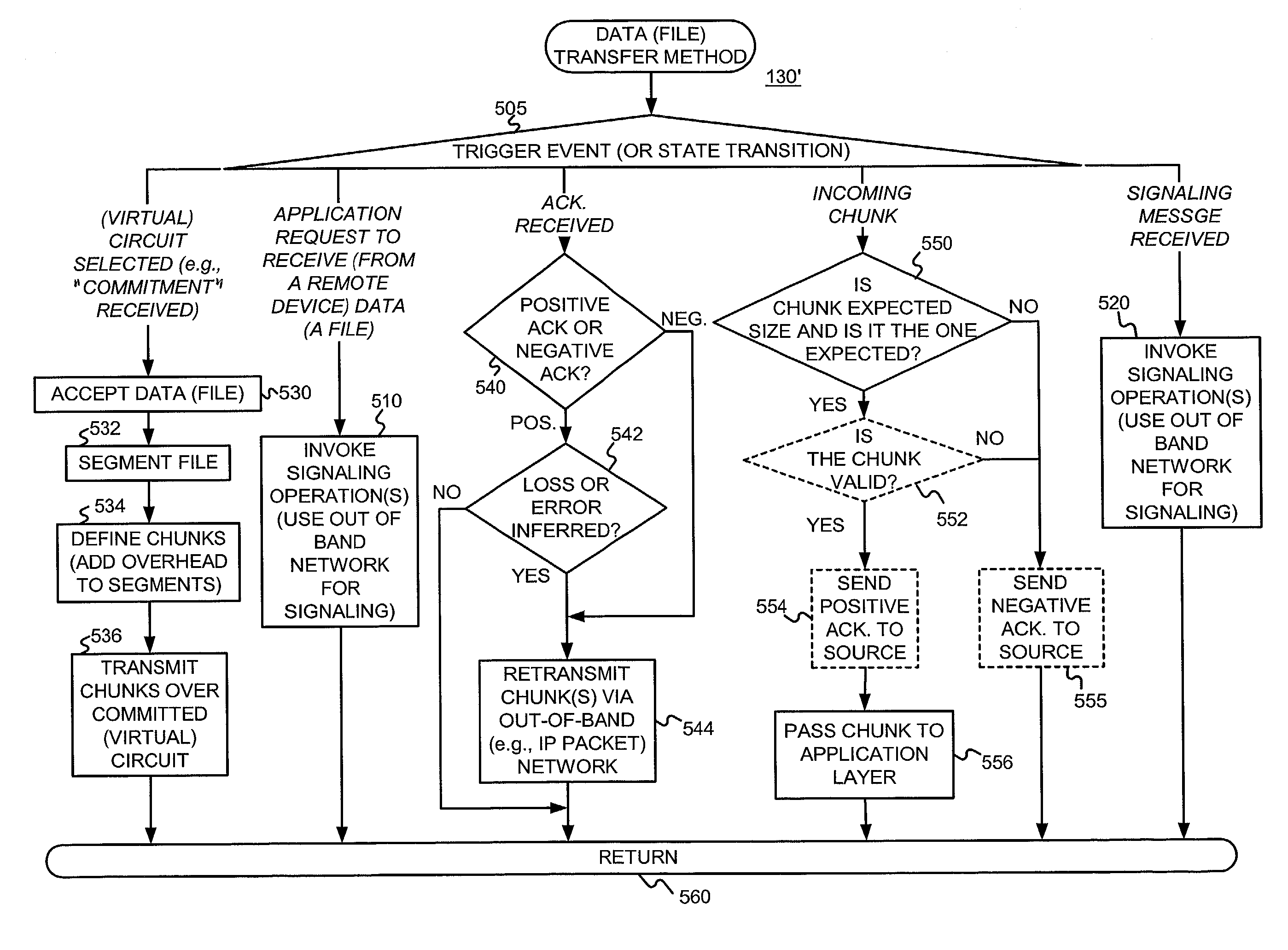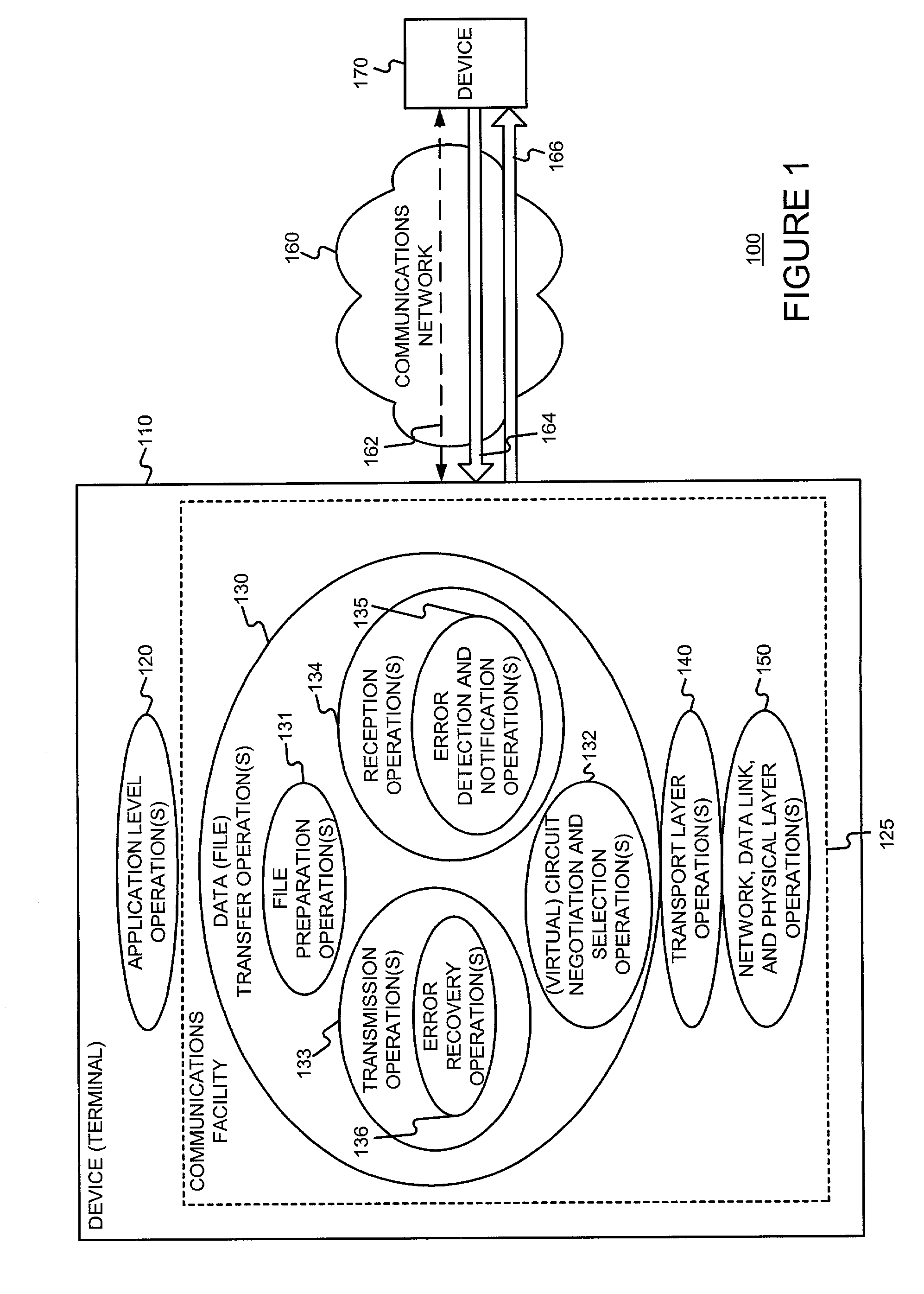Transferring data such as files
a data and file technology, applied in the field of data communication, can solve the problems of inefficient use of network resources by circuit-switched networks, waste of communications resources when no data is being transferred, and "connectionless" packet-switched networks, etc., to achieve faster processing speed, facilitate software implementation, and improve the effect of processing speed
- Summary
- Abstract
- Description
- Claims
- Application Information
AI Technical Summary
Benefits of technology
Problems solved by technology
Method used
Image
Examples
Embodiment Construction
[0029] The present invention involves methods, apparatus and data structures for providing high-speed, high-capacity data transfers. The following description is presented to enable one skilled in the art to make and use the invention, and is provided in the context of particular applications and their requirements. Various modifications to the disclosed embodiments will be apparent to those skilled in the art, and the general principles set forth below may be applied to other embodiments and applications.
[0030] Thus, the present invention is not intended to be limited to the embodiments shown and the inventors regards their invention as the following disclosed methods, apparatus and data structures and any other patentable subject matter.
[0031] The following table provides the meaning of various symbols used in the description.
1 Symbol Meaning C maximum chunk length = S + H D padded payload length E bit error probability H overheads P payload length R rate of a link (bits per secon...
PUM
 Login to View More
Login to View More Abstract
Description
Claims
Application Information
 Login to View More
Login to View More - R&D
- Intellectual Property
- Life Sciences
- Materials
- Tech Scout
- Unparalleled Data Quality
- Higher Quality Content
- 60% Fewer Hallucinations
Browse by: Latest US Patents, China's latest patents, Technical Efficacy Thesaurus, Application Domain, Technology Topic, Popular Technical Reports.
© 2025 PatSnap. All rights reserved.Legal|Privacy policy|Modern Slavery Act Transparency Statement|Sitemap|About US| Contact US: help@patsnap.com



